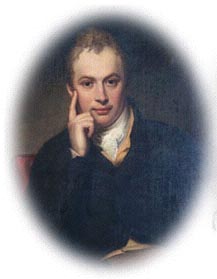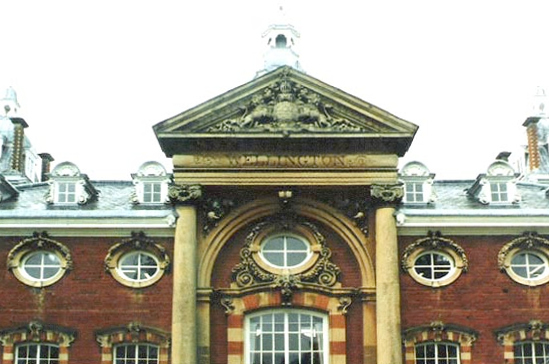[Paul Johnson has kindly shared the photographs and research on his UK site about John Shaw, Junior and Senior, and Philip Hardwick, which he has "dedicated to the Memory of the Finest Architectural Family London Has Ever Seen." Readers might like to look at his original presentation. GPL]
 Born in Holborn, Shaw Junior was trained by his father while he was working
at Newstead Abbey and Ramsgate Harbour. Shaw Junior helped him on both
of these projects, and he even designed the charming lighthouse at Ramsgate.
He also carried on his father's work with designing semi-detached houses
and estates in London.
Born in Holborn, Shaw Junior was trained by his father while he was working
at Newstead Abbey and Ramsgate Harbour. Shaw Junior helped him on both
of these projects, and he even designed the charming lighthouse at Ramsgate.
He also carried on his father's work with designing semi-detached houses
and estates in London.

 While
working on designing new additions for Eton College in the 1840s, his
big break came when he won the job to design the Royal Naval School in
New Cross; now of course widely known as Goldsmiths University. During
his lifetime architecture was usually seen in the Gothic appearance and
indeed, his father’s work resembled that style well. But Shaw Junior
chose another path of design and has been noted for being ahead of his
time in re-designing buildings in the Jacobean and revived Renaissance
style. It was also said that his work complemented the buildings by Christopher
Wren. Prime evidence of this difference in style can be seen next door
to his father's work of St Dunstan’s in The West Church on Fleet
Street, at number 187 which is an office building for a law firm designed
in the Jacobean style.
While
working on designing new additions for Eton College in the 1840s, his
big break came when he won the job to design the Royal Naval School in
New Cross; now of course widely known as Goldsmiths University. During
his lifetime architecture was usually seen in the Gothic appearance and
indeed, his father’s work resembled that style well. But Shaw Junior
chose another path of design and has been noted for being ahead of his
time in re-designing buildings in the Jacobean and revived Renaissance
style. It was also said that his work complemented the buildings by Christopher
Wren. Prime evidence of this difference in style can be seen next door
to his father's work of St Dunstan’s in The West Church on Fleet
Street, at number 187 which is an office building for a law firm designed
in the Jacobean style.


Two views of Wellington College, Sandhurst.
His design of the Classical Royal Naval School must have impressed Prince Albert when he came to the opening ceremony. It was Prince Albert who helped secure John with his next big project - a memorial building for the Duke Of Wellington in Sandhurst. The committee and the Prince had objected to a building in the Gothic design, so Shaw was seen as the right man to give them a classical masterpiece. Wellington College was completed in the 1850s and is a remarkable building for that time, red bricked and supported by sandy coloured colonnades standing in a wide open spaced playing field with a long walkway leading up to the building, it is one of England’s finest Colleges.John Shaw’s sister Julia married the prestigious architect Philip Hardwick, and the two families celebrated much success in their careers. Another famous Shaw was the writer and professor of English Literature, Thomas Budd Shaw (1813-1864), who was tutor to the grand Dukes of Russia at St Petersburg University. The Shaws lived at Gower Street, Aldelphi Terrace and eventually moved out to the ever growing borough of Kensington & Chelsea where John retired and later died in 1870. He is buried with members of his family and next to the Hardwicks at Kensal Green.
Last modified 3 June 2005